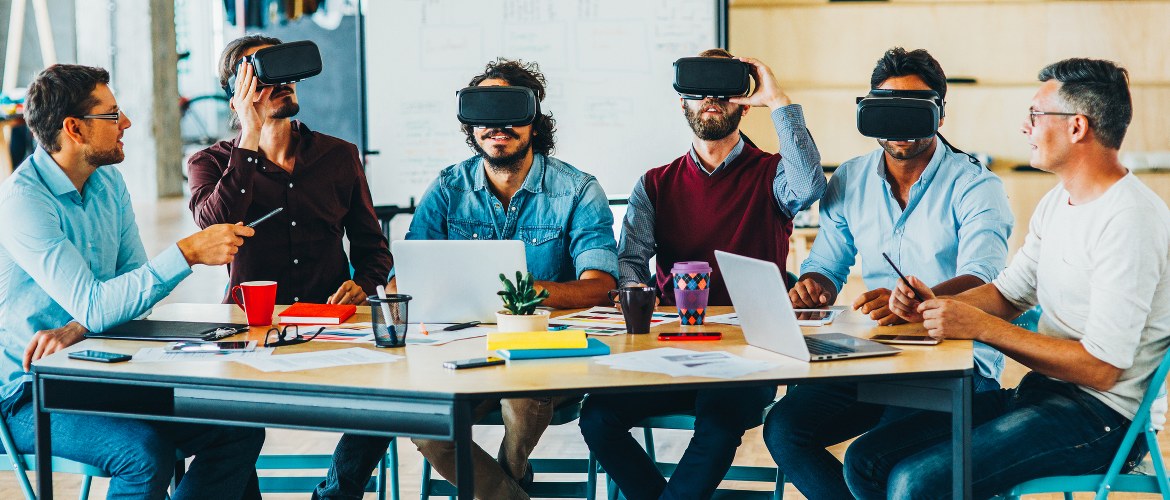
Office of the future: The technological backbone
Technology will so radically revolutionise the nature of working, that we will one day be able to complete tasks from absolutely anywhere we see fit.
Steps to the realisation of the connected virtual workplace
In the near future, the technological backbone of work looks set to become virtual rather than physical and disparate, thanks to the consolidation of multiple systems into a fluid connected ecosystem.
It is not necessarily the creation or adoption of any one piece of technology that will help to realise these blue sky working opportunities – but the convergence and integration of many technologies that empower employees of organisations large and small, to work anywhere, anytime, anyhow.
Below are 4 simple steps to the virtual connected ecosystem:
1) Migrate from physical server to cloud
Beyond saving space, slashing energy bills and improving security, migrating to cloud can help leverage workflow automation for critical business processes1. Adoption also significantly improves storage capabilities and enhances our ability to work anywhere, anytime from any device. Essentially, the cloud is a critical pillar of the seamless remote work experience.2) Adopt the new approach to IT procurement
Office technology pioneers are increasingly opting for contractual ways of resourcing rather than buying equipment outright. As the importance of interoperability gathers pace, it will become increasingly difficult to design fully-compatible systems in-house, and rather than using a multitude of suppliers – businesses will look for one provider that can design a fully-integrated package that spans everything from the software subscriptions to managed print. Critically, this will also see businesses gaining leading-edge capabilities.
3) Stay ahead with the quickest connections
As we poise to enter an era in which pretty much every office device generates Internet of Things (IoT) data, speed of connection will become critical as ever more devices draw on bandwidth. Ensure your Wi-Fi is as fast and reliable as it possibly can be. Also, be sure to empower your workers with the very latest mobile connectivity – at least 20 times faster than its predecessor, 5G will render buffering a thing of the past.
4) Implement, test
It is only by piloting new technology that businesses can test its viability, improve processes, unlock productivity gains and become the true leaders of their sector.

Future technology and its role within the workplace
If we look at the concept of a connected virtualised workplace as a springboard, emerging technologies and machine learning will add to this in ways we can only now begin to imagine:
Remote collaboration
Interaction through technology is poised to become more realistic thanks to VR where it will become possible to demo products and conduct far more engaging meetings remotely, perhaps in settings as diverse as outer space. This will also be enhanced by interactive screen technology, and innovations from the gaming industry, such as gesture control technology, which will enable us to control anything from large and multi-screen setups to lighting simply by moving our hands.
Voice assistance and command
Technology presently being pioneered in the consumer world such as Alexa, Cortana and Siri will embed itself in the workplace. In the future, we may find ourselves vocalising requests to virtual assistants and dictating to automated typing software, therefore increasing the interaction between humans and machines.
Biometric access
Security will tighten considerably as workers enter buildings and log into systems with finger print, retinal or voice access.
Anticipation of user need and self-diagnostics
Intelligent workplace technology such as smart multifunction printers (MFPs) will be able to anticipate the needs of the users, reordering parts or spares to maximise uptime, removing another productivity barrier.
Ubiquitous learning
In a move that could realise huge workplace efficiencies, algorithms will soon speed up task completion by mining data and solving productivity problems, which humans may never even have identified.
The future is connected and its potential limitless. As much as physical and intergenerational shifts add detail to the emerging picture, it is technology that will truly shape the future workplace.
1 Quocirca Print 2025, Digitisation: The key to SMB success



